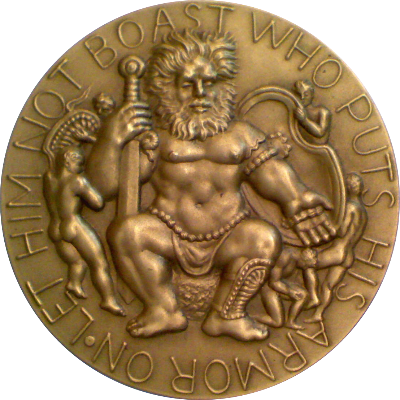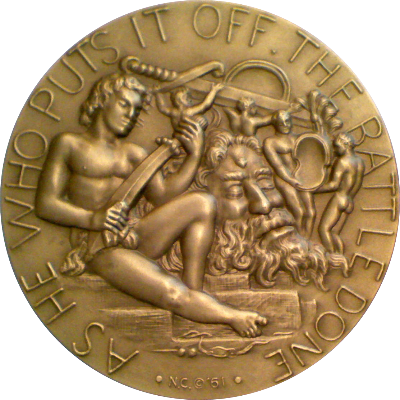Nathaniel Choate was born in 1899 in Southboro, Massachusetts. As a teen, he attended the Morristown School, a small preparatory school in New Jersey. He graduated from there in the class of 1918 and proceeded to Harvard University, where he studied Art History. While at Harvard, he also studied painting with Denman Ross, a professor and painter. Choate received his first prize from Harvard, the Bowers Prize for the "best drawing, made directly from nature, by an undergraduate in any of the courses in Fine Arts."
Choate moved to Paris after graduating from Harvard, where he continued his study of painting at various schools with various instructors. While in France, he took the opportunity to travel through Europe and the Mediterranean. During his travels in Greece, Choate became inspired by all the classical sculpture he saw. Upon his return to Boston, Choate focused on developing his skills as a sculptor. Though he never quite turned his back on painting and mural making, Choate's reputation as an accomplished medalist, bust-maker, and stone carver grew. While in Boston, Choate worked as an art editor for a children's magazine, The Youth's Companion.
A theme in Choate's life was how his travel influenced his work. The first instance of this was his trip to Greece, after which his medium of interest changed drastically. For five years after quitting his job as art editor, Choate moved back and forth between Europe and New York. In 1932, Choate departed Boston to travel through Morocco and Sudan, a trip that visibly influenced his following work. His work after this trip had a distinctly African-inspired feel. In 1936, Choate settled in Pennsylvania, where he would remain until shortly before his death. Most of his best-known work and critical recognition came from this era of his life. He accumulated numerous big commissions and awards, and became a member of the National Academy, the National Sculpture Society, the Architectural League of New York, the Ceramic Society and the Century Association. Among the commissions from this period are sculpting commissions to create art for the Federal Building at the 1939 World's Fair in Flushing Meadows and a U.S. Post Office in Pitman, NJ. Choate also created emblems of the Four Evangelists for the Luxembourg American Cemetery and Memorial, an American Battle Monument for World War II in Hamm, Luxembourg.
Between 1941 and 1947, Choate founded and ran Aldham Kilns, a ceramics company. Through the company he designed figural and fauna based ceramic and porcelain statuettes. In 1947, a fire destroyed the kiln, and Choate returned to focus on painting and carving. Towards the end of his life, Choate moved to Greenwich Village in New York. In 1965, he passed away, but his assorted works, sculptural pieces and paintings alike, remain on view across the country. He is remembered as one of the great African-American sculptors and painters of the 20th century.
I originally had Choate's middlename listed as "Bowditch" but a descendant of the artist pointed out that this was incorrect. While he was acquainted with a Boston family named Bowditch and apparently inherited some of that family's furniture he never carried that name.
Sourced mainly from Wikipedia and the sources listed in the Resources tab.


